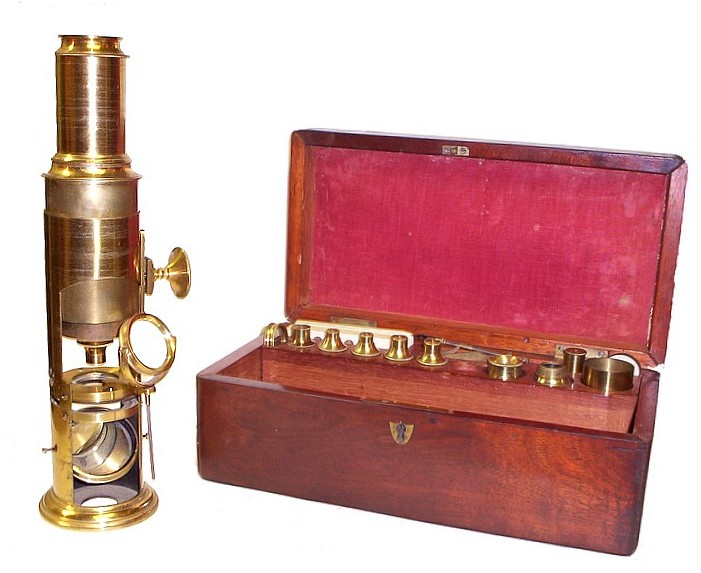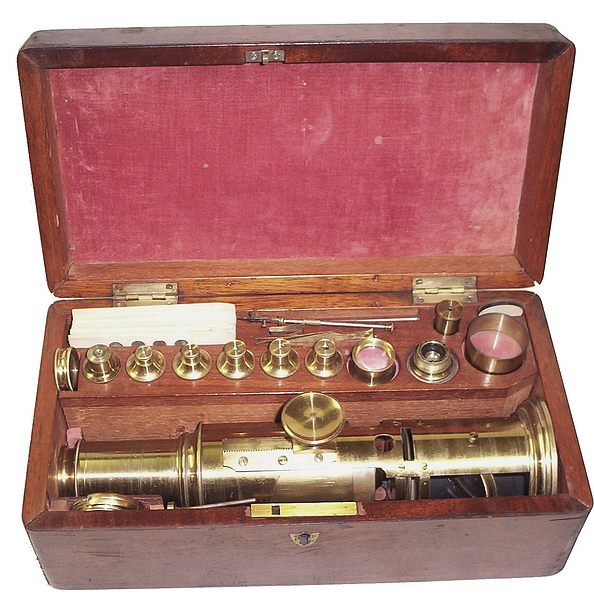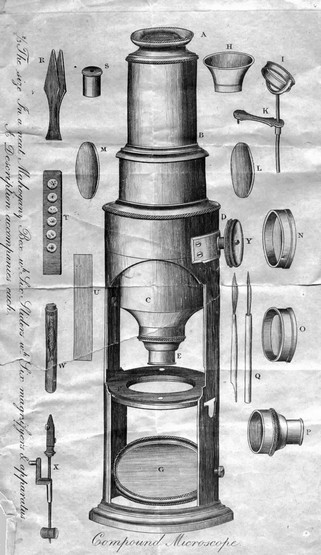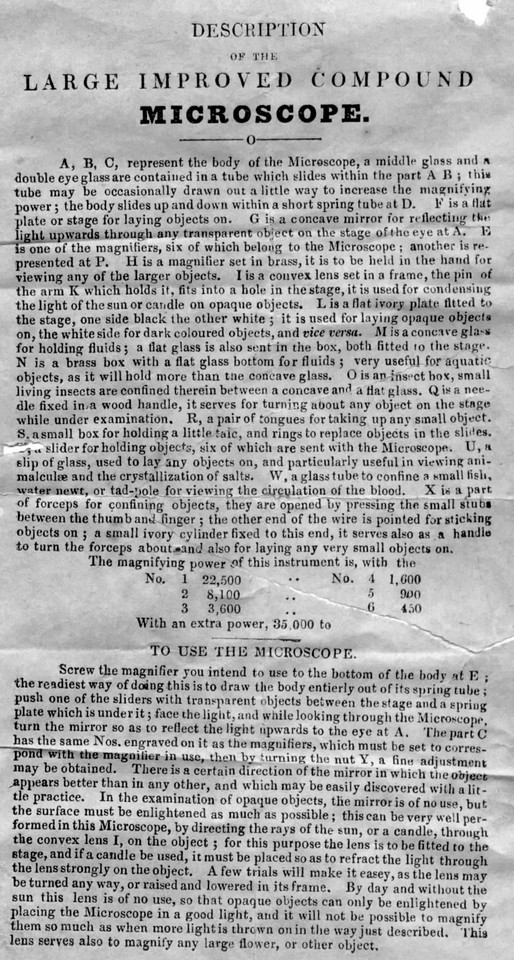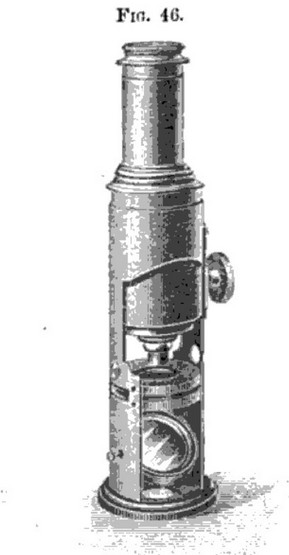This drum type microscope comes with a complete set of accessories that include six numbered objectives, another objective with Lieberkuhn reflector, a brass cell with a glass bottom for wet preparations, a hand magnifier, a brass talc box, a live box, a stage forceps, a hand forceps, a glass tube, a stage condenser, ivory and glass stage inserts, and a group of six sliders with each containing multiple specimens. There is a drawer in the case that holds the original instruction sheet, which is reproduced below.
These drum microscopes, which are based on an 18th century design by Benjamin Martin, are relatively common. They date from the early to mid 19th century. The optics are non achromatic. Some are signed by a retailer, while others are unsigned. Most likely these were made for the trade and not necessarily by the firm identified by the signature. Versions were produced with and without the rack and pinion focusing adjustment.
Martin Microscope.—Fig. 46 illustrates a Microscope alleged to have been made by Benjamin Martin, and presented to the Society last year by Mr. Alfred George Fryett, of Melbourne, Australia. This has evidently been evolved from B. Martin’s first Microscope, which he called a “Pocket Reflexting Microscope," an account of which was published in 1739.
In the library of the Society is a collection of B. Martin’s tracts (1765), in which an improvement of his “ Pocket Reflecting Microscope ” is fignrod, pi. 2, fig. 13. This improvement consisted in prolonging the tube, and placing below the stage a mirror, capable of being inclined, for the purpose of illuminating transparent objects. Note that the term ”reflecting” applies solely to the mirror used for the purpose of illuminating transparent objects, and does not imply that the instrument was on the catadioptric principle.
Martin's improved Microscope is now known as the drum-foot; it is still made in France, and is occasionally to be seen in our toy shops. This form of Microscope was adopted by Fraunhofer(1816), Oberhauser (1835, patented 1837), Lerebours (1838).
Martin's second improvement consisted in the adaptation of the Culpeper and Scarlet tripod foot, a form which has long since passed away. This is figured in his Optical Essays,' fig. 21, no date (bound up with his tracts).
The Microscope in fig. 46 is a later form of his drum microscope further improved by tbe addition of a rack work course adjustment. This Microscope is neither signed nor dated. B. Martin died in 1782, and the instrument appears to be of a much later date than that. The box contains a cut of the instrument, with a descriptive text, in which it is called Martin’s Microscope, but it does not appear to be older than the first half of the present century.
